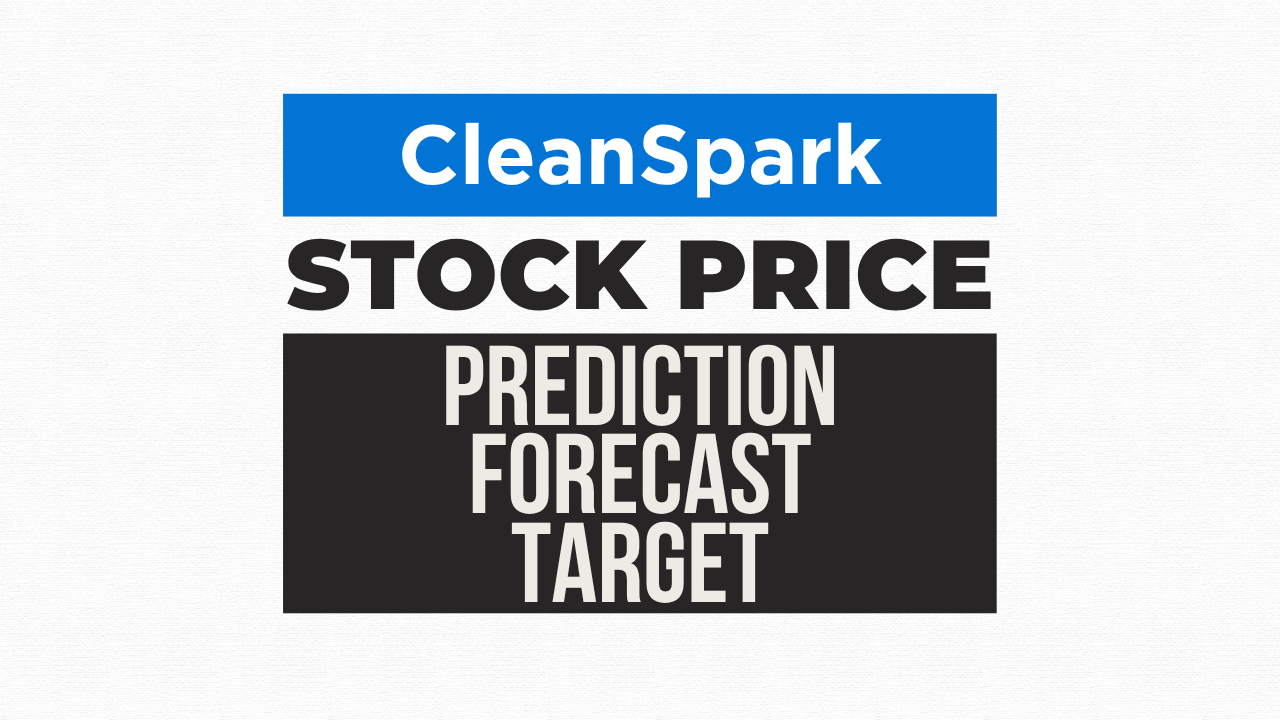CleanSpark, Inc. (CLSK) is a major Bitcoin mining company that focuses on using clean energy to power its mining operations.
Here’s a detailed look at the company’s core details, followed by a brief summary of its business and why it matters.
| Company Name | CleanSpark, Inc. |
| Sector | Financials |
| Industry | Capital Markets / Bitcoin Mining |
| IPO Year | 2016 |
| Stock Exchange Listed | NASDAQ |
| Founded By | Michael Saylor (early role), led by Zach Bradford |
| Established In | 2014 |
| Specialization | Bitcoin Mining, Clean Energy Solutions |
Founded in 2014 and based in Henderson, Nevada, CleanSpark turned into a full-time Bitcoin mining company in 2020. It brands itself as “America’s Bitcoin Miner” and operates data centers across southeastern and southwestern parts of the U.S. CleanSpark uses low-carbon energy at these sites. In 2024, it mined 7,024 Bitcoins and held more than 12,000 BTC in reserves as of April 2025. The company’s inclusion in the S&P SmallCap 600 in March 2025 shows its growing importance in the crypto world.
Stock Price Moves Relative to Fundamental Factors
Stock prices usually follow a mix of company performance, the economy, and industry trends.
For CleanSpark, the main drivers are
- Bitcoin Prices
- Mining Efficiency
- Hash Rate Growth, and
- Power Costs.
Its earnings for Q1 2025 showed revenue of $162.3 million (a 120% rise from last year) and net income of $246.8 million, thanks to Bitcoin reaching about $100,000.
External factors such as crypto regulation, energy costs, and investor views on digital assets also affect the stock. Over the long term, its future depends heavily on these basics, especially given the ups and downs in the mining industry.
Sector Overview
CleanSpark works in the Financials sector. This sector includes banks, investment firms, and now also includes companies involved in cryptocurrency and blockchain. Bitcoin miners like CleanSpark serve as a link between traditional finance and digital currencies.
Also Read – 5 Benefits of Cryptocurrency for Governments Around the World
Main Factors That Affect the Sector
Here are a few key things that impact the sector:
- Cryptocurrency Prices: The price of Bitcoin directly affects earnings. CleanSpark benefited when BTC jumped 24% in late 2024.
- Regulatory Environment: Laws related to crypto taxes and mining rules can affect costs and how easily companies can operate.
- Economic Conditions: Things like interest rates and inflation shape whether investors want to take risks on stocks like CLSK.
Growth in Recent Years
The Financials sector has grown rapidly in the crypto space, with help from institutions adopting Bitcoin and the price nearing $100,000 in 2024. CleanSpark’s recent addition to the S&P SmallCap 600 increased its visibility. Deals like a $50 million credit line from Coinbase and a $550 million convertible notes offering have made the company more financially flexible, which is key for growth.
Industry Analysis
In the Financials sector, CleanSpark works in the Bitcoin Mining industry. This industry earns Bitcoin by verifying blockchain transactions. It uses a lot of energy and is highly competitive. It’s also very dependent on Bitcoin’s price and the difficulty level of mining. CleanSpark stands out by using clean energy and competes with companies like MARA and Riot Platforms.
Key Factors in This Industry
Here are the main things that shape the Bitcoin Mining space:
- Bitcoin Price Fluctuations: With Bitcoin around $100,000 in 2025, CleanSpark earns high profits since its cost per coin is about $34,000, giving them 60%+ profit margins.
- Energy Costs: Cheap and sustainable power is essential. CleanSpark benefits from low U.S. electricity costs.
- Hash Rate Competition: A higher hash rate means better mining chances. CleanSpark had a 40.2 EH/s rate as of April 2025.
Industry Growth and Updates
Bitcoin mining has seen big gains due to a 125% rise in Bitcoin prices in 2024 and the halving event. CleanSpark mined 1,957 Bitcoins in Q1 2025. The company’s hash rate is already over 40 EH/s, aiming for 50 EH/s by mid-2025. After buying GRIID Infrastructure and opening new centers in Mississippi and Wyoming, it now has a fleet efficiency of 21.94 J/TH. While some rivals are moving into AI or other fields, CleanSpark remains focused on mining, helping it scale better and aim for bigger rewards.
Stock Growth and Key Factors
CleanSpark’s stock is closely linked to how well it runs its operations and the state of the mining industry. Even though the stock dropped 13.3% in early 2025, it jumped 7.1% in pre-market trading after strong Q1 earnings. Revenue hit $162.3 million with a 60%+ gross margin.
The company’s BTC holdings rose to 12,000 BTC, worth over $1 billion. It used to keep all its mined Bitcoin (HODL), but in March 2025, it sold 14.23 BTC at $87,742 each. New expansions in Wyoming aim to boost hash rates by 5 EH/s. These improvements, alongside Bitcoin’s strong price, help support future growth, though the stock remains risky due to high valuation.
Speculative Targets
Technical analysis can help guess short-term price moves. On May 9, 2025, CleanSpark’s stock was $8.25 after a 4.95% drop in after-hours trading, due to earnings missing expectations. However, earlier in January 2025, the stock had climbed to about $10.99. Key technical signals include:
- Moving Averages: The 50-day average is lower than the 200-day average, suggesting short-term weakness but possible recovery if Bitcoin holds steady.
- Support and Resistance Levels: Support is near $8, and resistance is around $11.
- RSI (Relative Strength Index): With an RSI near 45, the stock has neutral momentum but could move up if sentiment improves.
Long-Term Price Forecasts
Assuming CleanSpark grows at 10% yearly (based on historical averages), here are estimated stock price ranges from a starting point of $8.25 (as of May 9, 2025):
2030 (5-Year Outlook)
- Median (10%): $13.29
- Conservative (5%): $10.53
- Optimistic (15%): $16.58
2040 (15-Year Outlook)
- Median (10%): $34.46
- Conservative (5%): $17.09
- Optimistic (15%): $67.04
2050 (25-Year Outlook)
- Median (10%): $89.35
- Conservative (5%): $27.92
- Optimistic (15%): $270.76
These figures assume that CleanSpark stays efficient and Bitcoin prices remain strong. But changing mining difficulty, electricity costs, or new laws can all impact these numbers. Analysts had a near-term target of $21.57 in May 2025, showing short-term optimism. Long-term forecasts, however, are highly speculative.
Long-Term Growth Prospects
CleanSpark’s future looks strong, mainly because of its focus on clean energy and mining efficiency. Its Q1 2025 revenue of $162.3 million was 120% higher than the previous year, with gross margins above 60%. Each Bitcoin costs about $34,000 to mine. The company’s hash rate already hit 40.2 EH/s, with a target of 50 EH/s by June 2025. Expansion in Tennessee and Wyoming is helping this growth.
CleanSpark’s $1 billion BTC treasury and a $550 million notes offering give it more financial strength. Risks still exist, like falling Bitcoin prices, rising competition, and possible legal challenges. But if it continues to grow efficiently and rides the wave of crypto adoption, returns could be big—even though it didn’t rise as much as Bitcoin’s 125% gain in 2024.
The Bottom Line
CleanSpark, Inc. is emerging as a strong player in both the Financials sector and the Bitcoin Mining industry. Its use of clean energy and operational efficiency are setting it apart. Q1 2025 numbers—$162.3 million in revenue and over 12,000 BTC held—prove its strength. While long-term targets like $13.29 in 2030 or $89.35 in 2050 suggest good upside, investors should remain cautious. Bitcoin’s price swings, regulation changes, and industry shifts could impact returns. CleanSpark remains a high-potential but high-risk stock in the growing cryptoeconomy.
This article is for informational purposes only and should not be considered financial advice. Investing in stocks, cryptocurrencies, or other assets involves risks, including the potential loss of principal. Always conduct your own research or consult a qualified financial advisor before making investment decisions. The author and publisher are not responsible for any financial losses incurred from actions based on this article. While efforts have been made to ensure accuracy, economic data and market conditions can change rapidly. The author and publisher do not guarantee the completeness or accuracy of the information and are not liable for any errors or omissions. Always verify data with primary sources before making decisions.

